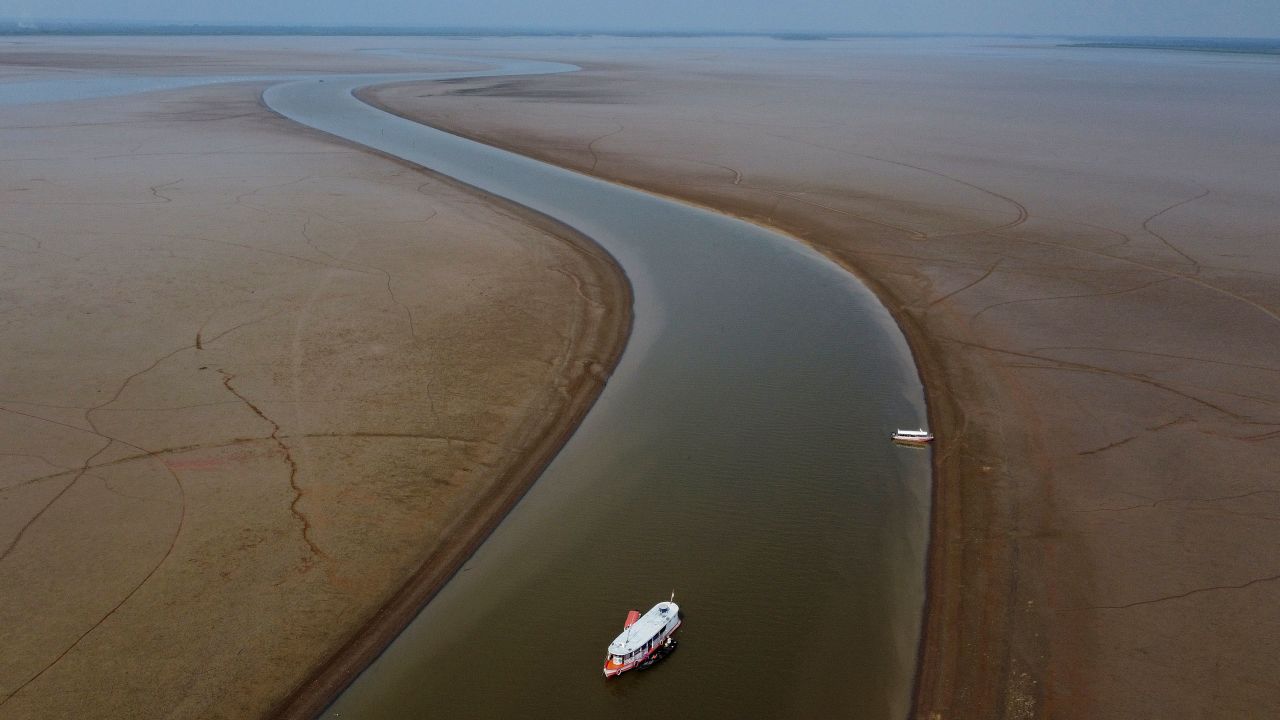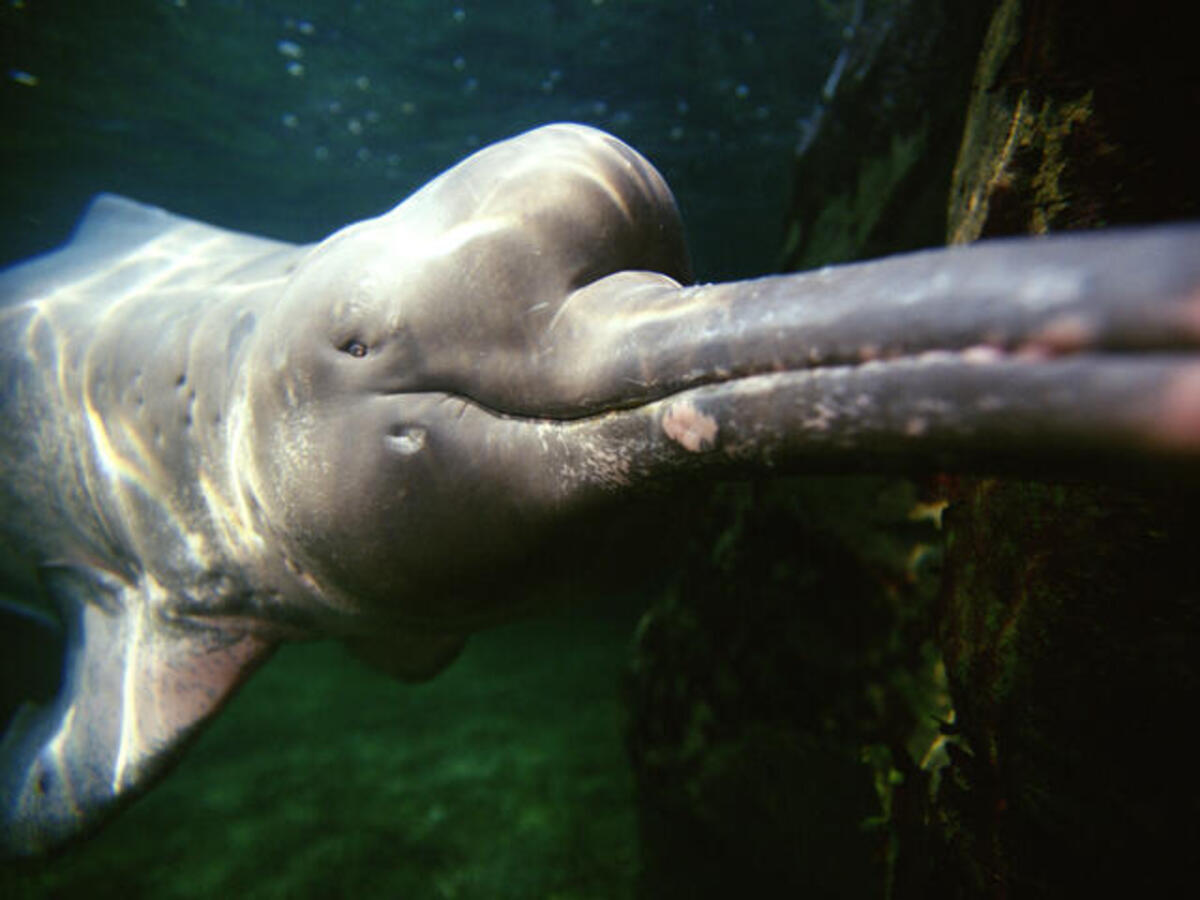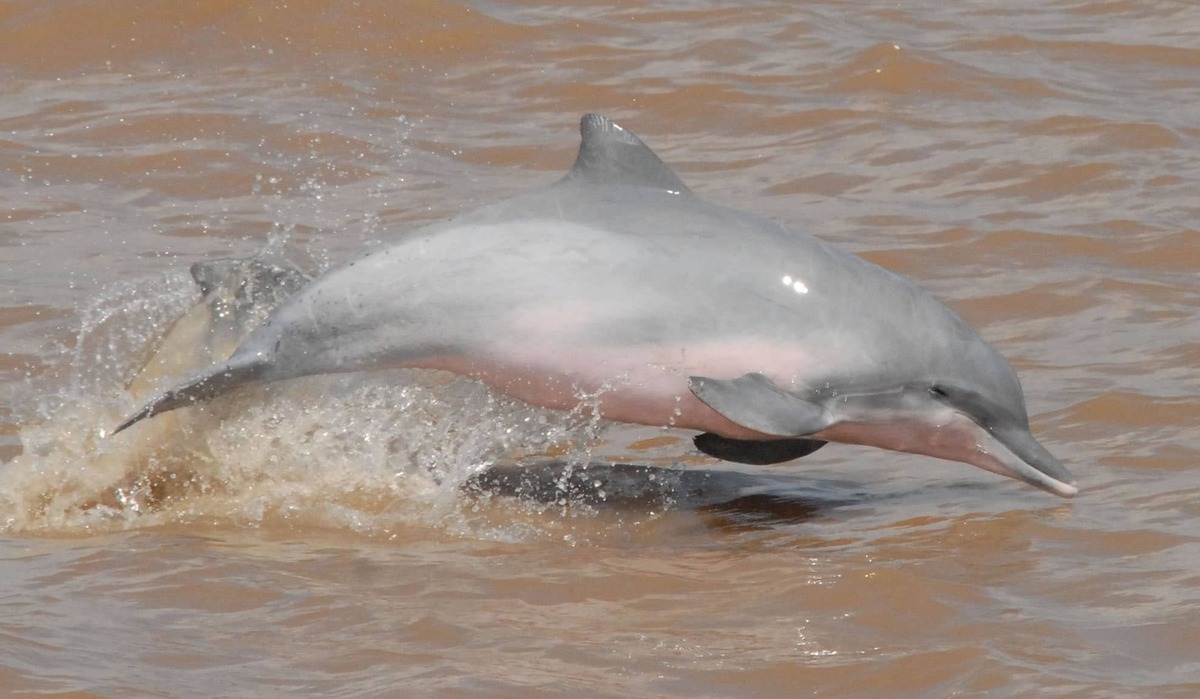100+ Dolphins Dead In Amazon Drought As Waters Reach 102°F
100+ dolphins dead in Amazon due to extreme drought conditions. As waters hit alarming temperatures, the ecosystem faces unprecedented challenges.
Author:Morgan MaverickReviewer:Professor JhizOct 03, 202354 Shares53.6K Views
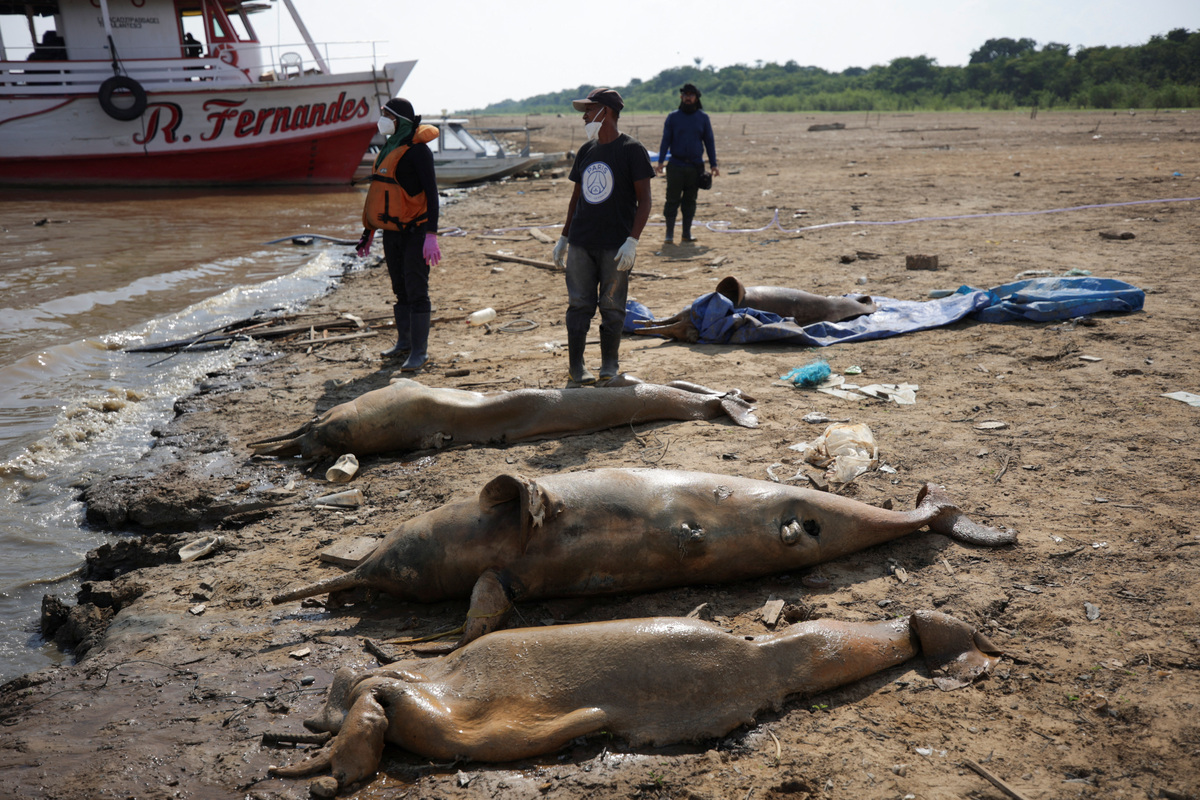
In a somber manifestation of the effects of climate change on our planet's delicate ecosystems, reports from Brazil have highlighted the discovery of 100+ dolphins dead in Amazon. Linked to an intense drought and extreme water temperatures, these tragic events underline the broader environmental emergency unfolding in the region.
The Amazon rainforest and its rivers, replete with life and wonder, have unfortunately not been spared the wrath of changing climate patterns.
Climate Crisis Linked To 100+ Dolphins Dead In Amazon
The Mamirauá Institute for Sustainable Development has documented these distressing finds in Lake Tefé. According to their observations, the event is possibly tied to the prolonged drought period and soaring water temperatures in the lake, with readings sometimes exceeding 39 degrees Celsius (102 degrees Fahrenheit).
But dolphins aren't the sole victims of this ecological tragedy. Thousands of fish have also been found lifeless in Lake Tefé. For an ecosystem as rich and interconnected as the Amazon, which boasts the world's largest river, the rapid decline of its aquatic life is a grim reminder of our changing climate's impacts.
Relaying his personal experiences, Daniel Tregidgo, a British researcher living in the region shared about the 100+ dolphins dead in Amazon, and commented, “The past month in Tefé has seemed like a science-fiction climate-change scenario. Regular sightings of pink river dolphins are one of the great privileges of living in the heart of the Amazon. ... To know that one has died is sad, but to see piles of carcasses, knowing that this drought has killed over 100, is a tragedy."
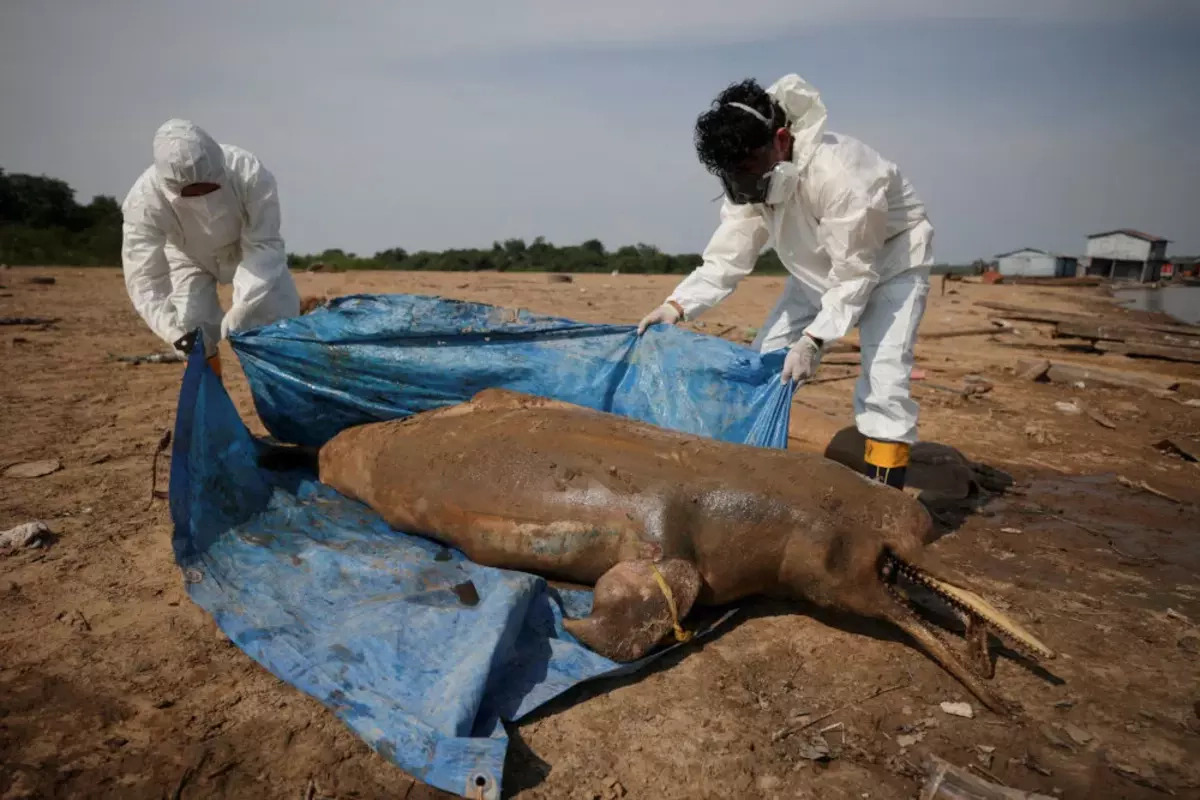
But the threats to the Amazon and its aquatic life are not only ecological—they reverberate through society and economy.
Societal And Economic Implications
Beyond the immediate ecological repercussions, the Amazonas state faces socio-economic challenges. Rapidly depleting water levels are disrupting transportation and fishing, both vital to the local economy and the sustenance of many communities in the region. As a result of these challenges, the Amazonas state's civil defense agency has reported that 15 municipalities are now in a state of emergency, with 40 more on high alert.
The present situation has been attributed, in part, to the El Niño weather phenomenon, which tends to bring warmer waters and influence globalweather patterns. When combined with the broader issues of global climate change, the region faces increasingly frequent and intense droughts.
From an economic standpoint, the Amazon's crucial transport and fishing sectors are in jeopardy. With the majority of municipalities in the Amazonas State witnessing below-average water levels, future forecasts suggest even more acute drought conditions and potentially more marine life fatalities.
Global Responses And The Way Forward
The global significance of the Amazon rainforest, often referred to as the Earth's lungs, cannot be overstated. Home to unparalleled biodiversity, the region plays a pivotal role in global climate regulation. However, its delicate ecosystem is now threatened, requiring immediate international intervention.
The current state of the dolphins, known as "botos" locally and considered a barometer of river health, further emphasizes the Amazon river system's importance. Notably, these dolphins are categorized as endangered by the International Union for the Conservation of Nature and are among the mere six freshwater dolphin species still in existence globally.
Given the gravity of the situation, a collective and coordinated global response is of the essence. While local and national initiatives can provide immediate relief, a more extensive, unified effort is crucial to combat the root causes and mitigate future risks.
The challenges confronting the Amazon region are a stark reminder of our global environmental crises. With its rich biodiversity at stake, combined with the immediate challenges faced by its residents and broader economic concerns, the need for swift, decisive action is paramount.
As the world grapples with the reality of the situation, the spotlight is firmly on the unique inhabitants of the Amazon, such as the river dolphins, and their irreplaceable role in the ecosystem.
The Vital Role Of River Dolphins In Ecosystem Health
Dolphins, alongside sharks and sea turtles, are among Earth's oldest creatures. While the vast, blue oceans are often perceived as their primary abode, dolphins also thrive in the freshwater rivers of South America and Asia. These river dolphins serve as more than mere aquatic spectacles; they act as vital indicators of the health of riverine ecosystems. Their presence, or absence, can provide critical insight into the overall wellbeing of these freshwater environments.
River Dolphins - The Ecosystem's Health Barometer
River dolphins are barometers for river health. When a river dolphin population thrives, it indicates a flourishing freshwater system. Conversely, a dwindling dolphin population signals potential disturbances or imbalances within the ecosystem. The fate of these dolphins is intricately linked with the condition of their habitats, making their conservation paramount for safeguarding freshwater basins worldwide.
The World Wildlife Fund (WWF) recognizes the crucial role river dolphins play in maintaining healthy ecosystems. Through its River Dolphins Initiative, WWF collaborates extensively with governments, communities, and other stakeholders to address threats such as bycatch, harmful infrastructure, and habitat degradation. Their endeavors span from scientific research to influencing policy changes, ensuring these ancient animals continue their sentinel role for years to come.
One of the most iconic of these river dolphins is the Amazon River dolphin.
The Amazon River Dolphin - A Symbol Of South American Rivers
The Amazon River dolphin, known locally as the 'boto' or 'pink river dolphin,' is a mesmerizing sight in the waters of the Amazon and Orinoco river basins, which sprawl across South America.
Notable for its unique pale pink hue and elongated snout, this species has two distinct types: the Bolivian Bufeo and the Common Bufeo. However, their ethereal beauty doesn't shield them from various challenges.
Threats And Conservation Efforts
Development, particularly dam constructions, poses significant threats to the Amazon River dolphin. These infrastructural projects can fragment dolphin populations, impeding their movements and reproductive activities. Furthermore, pollution, notably from substances like mercury, is a growing concern for their health. Shockingly, these dolphins face human-induced threats too, being killed intentionally to be used as bait for mota catfish, a lucrative catch in local markets.
In response to these challenges, WWF engages in an array of protective activities. By employing satellite tagging, they gather invaluable data on dolphin distribution and behavior, thereby enhancing conservation efforts. WWF also monitors extensive river stretches using expeditions and drones to count and track these animals.
Their collaborative work, especially the Regional Conservation and Management Plan for River Dolphins, with nations like Brazil, Colombia, Ecuador, and Peru, under the banner of the South American River Dolphin Initiative (SARDI), aims to foster cooperation in conserving habitats and ensuring the dolphins' protection.
The Amazon River itself, encompassing a staggering 2.7 million square miles, is a treasure trove of biodiversity, housing more than 3,000 freshwater fish species. WWF's endeavors extend beyond dolphin conservation, as they partner with local communities and governments, seeking solutions that harmonize economic development with environmental conservation.
However, the Amazon River dolphin isn't the only species facing grave challenges in these waters.
The Tucuxi - The Guardian Of River Routes
A smaller cousin to the Amazon River dolphin is the Tucuxi, characterized by its gray hue. These creatures, seen throughout the Amazon and Orinoco river basins, are revered as river guardians and symbols of good fortune.
Their remarkable ability to navigate treacherous, rocky, and shallow river sections has earned them a legendary status, guiding local populations through safe water routes. Unlike their pink counterparts, Tucuxis are often seen leaping out of water, showcasing their playful nature.
Like the Amazon River dolphin, the Tucuxi faces challenges from human developments, notably dam constructions, which fragment their habitats and hinder breeding. They're also susceptible to gillnet mortality and are sometimes intentionally killed for fish bait.
Recognizing the threats, WWF emphasizes expanding satellite tagging for Tucuxis to understand their distribution and movement patterns better. Partnering with other organizations and governments, they aim to enhance protected areas' management, striving for more effective conservation efforts.
River dolphins, whether the ethereal pink boto or the agile Tucuxi, are more than just freshwater inhabitants. They are the heartbeat of river ecosystems, offering insights into the health and vitality of these waters.
Their conservation isn't just about preserving a species; it's about safeguarding entire freshwater basins for future generations. As we learn more about these charismatic animals, it's evident that concerted, collaborative efforts are essential to ensure they swim freely in our world's rivers for eons to come.
FAQs
How Many Dolphins Have Been Found Dead In The Amazon Recently?
Over 100 dolphins have been reported dead in the Amazon, a concerning number pointing to broader environmental issues in the region.
What Is Believed To Be The Cause Of These Dolphin Deaths?
The deaths are linked to an intense drought and extreme water temperatures in the region, exacerbated by climate change.
Are Dolphins The Only Marine Animals Affected By The Current Environmental Conditions In The Amazon?
No, thousands of fish have also been found lifeless in Lake Tefé, emphasizing the larger ecological tragedy unfolding.
How Do These Dolphin Deaths Reflect The Overall Health Of The Amazon River Ecosystem?
Dolphins act as indicators of river health. A decline in their population is a red flag for the ecosystem, suggesting that the freshwater system they inhabit may be in distress.
How Have Local Communities Been Affected By The Changes In The Amazon Ecosystem?
Depleting water levels have disrupted transportation and fishing, two pillars of the local economy. As a result, 15 municipalities in the Amazonas state have declared a state of emergency, with 40 more on high alert.
Are There Any Organizations Or Initiatives Working Towards The Conservation Of River Dolphins?
Yes, the World Wildlife Fund (WWF), among others, is actively involved in the protection of river dolphins through its River Dolphins Initiative, collaborating with governments, communities, and other stakeholders.
What Is The Significance Of The Amazon River Dolphin, And How Is It Different From Other Species?
The Amazon River Dolphin, also known as the 'boto' or 'pink river dolphin,' is unique for its pale pink hue and long snout. It's an iconic species of the Amazon and Orinoco river basins in South America.
Are There Any Global Responses Or Interventions In Place To Address The Environmental Challenges In The Amazon?
The global significance of the Amazon rainforest necessitates international intervention. While local and national initiatives provide immediate relief, coordinated global efforts are crucial to combat root causes and mitigate future risks.
What Challenges Do River Dolphins In The Amazon Face?
River dolphins, particularly the Amazon River Dolphin, face threats from development projects, dam construction, pollution, and even deliberate killing for use as bait in local fisheries.
How Can Individuals Help In The Conservation Of River Dolphins And The Broader Amazon Ecosystem?
Individuals can support and donate to organizations like WWF, spread awareness of the issue, participate in sustainable practices, and lobby for environmental policies that prioritize conservation and climate action.
Conclusion
In reflecting on the environmental crisis unfolding before our eyes, the discovery of 100+ dolphins dead in Amazon serves as a poignant and urgent reminder of the dire consequences of climate change and human interference on our planet's delicate ecosystems. As we grapple with such alarming incidents, it becomes imperative for the global community to prioritize and intensify conservation efforts, ensuring that the tragic loss of marine life does not become a recurring narrative in our shared environmental history.

Morgan Maverick
Author
Morgan Maverick is an unorthodox news reporter driven by an insatiable hunger for the truth. Fearless and unconventional, he uncovers hidden narratives that lie beneath the surface, transforming each news piece into a masterpiece of gritty authenticity. With a dedication that goes beyond the boundaries of conventional journalism, Morgan fearlessly explores the fringes of society, giving voice to the marginalized and shedding light on the darkest corners.
His raw and unfiltered reporting style challenges established norms, capturing the essence of humanity in its rawest form. Morgan Maverick stands as a beacon of truth, fearlessly pushing boundaries and inspiring others to question, dig deeper, and recognize the transformative power of journalism.

Professor Jhiz
Reviewer
Professor Jhiz brings fun to teaching anatomy. Born in China, she shares her fascination for how the body works.
Students say her lectures are lively with jokes and stories. She draws cartoon diagrams that highlight structures creatively.
Professor seeks to inspire curiosity and joy in anatomy. She treats each class like a show using props and costumes.
When not teaching, Jhiz enjoys karaoke and novelty socks. Her goal is passing on a spirit of wonder to students.
Latest Articles
Popular Articles
